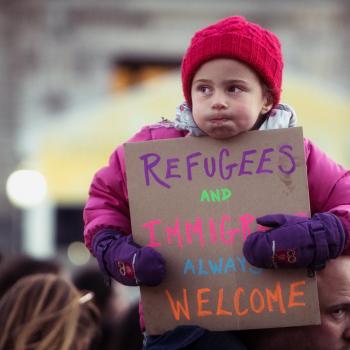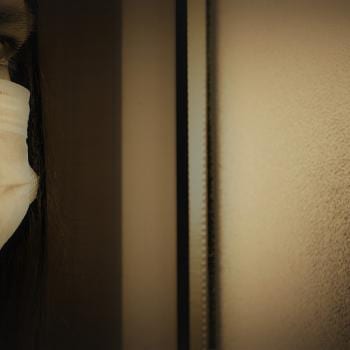Shock.
Sorrow.
Thoughts and prayers.
“We need to talk about gun control.
“No! Don’t politicize this tragedy.”
We go through the same routine for every mass shooting. And if we do press on and talk about gun control, we can expect the same rote responses: it’s not a gun problem; it’s a heart problem. Guns don’t kill people; people do. Sacred second amendment rights. And, of course, “but abortion!”
I went to bed last night sorrowful, with the images of the faces of the children killed at Sandy Hook fresh in my mind. Sandy Hook. That was six years ago, when twenty children ages six and seven were murdered. How many mass shootings have occurred in the United States between then and now?
According to an article from October of last year:
Since the 2012 Sandy Hook Elementary School massacre, the U.S. has seen 1,518 acts of gun violence in which at least four people were wounded or killed, according to the Gun Violence Archive website. That’s nearly one mass shooting a day for the 1,754 days since the shocking slaughter of the Connecticut kids.
According to a New York Times piece from today – February 15, 2018 – “there have been at least 239 school shootings nationwide. In those incidents, 438 people were shot, 138 of whom were killed.”
In 2018 we’ve already had eighteen mass shootings.
And Nothing Has Changed.
No new legislation has been enacted. Those who feared that Obama was “coming for their guns” ought to rest at ease, since it’s obvious that we just don’t care.
It was made obvious when homespun hero “Joe the Plumber” just came out and said it: “your dead kids don’t trump my second amendment rights.”
Yes, he said this to the parents of those murdered in the Santa Barbara shooting.
It was horrifying, it was disgusting – but it’s what many Americans apparently think, even if they’re too polite to admit it. It’s the same attitude that’s latent beneath the arguments of everyone who refuses to talk gun control.
I went to bed sorrowful, and then woke up to these arguments. No one was saying it in exactly those crass terms, but it was clear which values were at stake, for these people. The ongoing mantra was that we need our guns, we have a right to our guns, and no one’s going to take them away from us. We need our guns because of people with guns. And anyway, it’s not the gun’s fault. No one ever saw a gun get up and kill someone of its own volition. Guns are obviously innocent. Perfectly harmless.
As a gun owner myself, I am always alarmed when people say such things, because a person who says that a gun isn’t intended for killing is not a person who ought to have access to a firearm. Firearm safety is predicated on the recognition that these things are lethal. When we taught our thirteen year old to shoot the 20 gauge, last month, we reminded him. This is not a toy. This is a tool. And it’s a tool that was designed to kill. It is dangerous. Treat every gun as loaded.
People who don’t get this are the ones likely to leave guns lying around, to do stupid gun tricks, and go shooting while drunk. It’s not just the criminals having access to guns that I worry about: it’s the idiots, also.
We should be grateful to Joe the Plumber, I suppose, for getting it out there. That there’s a huge swathe of people who thinks a rule made up by a cabal of well-meaning but still morally limited eighteenth-century deists is more sacred than the fundamental right to life.
To Joe the Plumber, I say: your so-called second amendment right is a human invention. It isn’t intrinsic. And you’re an ass.
But is it Really a Gun Problem?
Last year, Leah Libresco published a piece in which she argued, from a statistical standpoint, gun control won’t make a difference. Naturally, it was a popular piece in many circles. But then German Lopez responded to Libresco in an article in Vox, arguing that, in fact, the statistics do demonstrate that gun control saves lives.
Last year, researchers from around the country reviewed more than 130 studies from 10 countries on gun control for Epidemiologic Reviews. This is, for now, the most current, extensive review of the research on the effects of gun control. The findings were clear: “The simultaneous implementation of laws targeting multiple firearms restrictions is associated with reductions in firearm deaths.”
The study did not look at one specific intervention, but rather a variety of kinds of gun control, from licensing measures to buyback programs. Time and time again, they found the same line of evidence: Reducing access to guns was followed by a drop in deaths related to guns. And while non-gun homicides also decreased, the drop wasn’t as quick as the one seen in gun-related homicides — indicating that access to guns was a potential causal factor.
Based on the other research, this actually isn’t a very surprising finding. Regularly updated reviews of the evidence compiled by the Harvard School of Public Health’s Injury Control Research Center have consistently found that when controlling for variables such as socioeconomic factors and other crime, places with more guns have more gun deaths.
Stephen Snyder, in “When Trying to Determine Why the US Has So Many Mass Shootings, Only One Statistic Matters”, quotes criminologist Adam Lankford:
“You could certainly make the argument, I think a lot of people would, that American gun culture is to some degree holding us back from real reform when it comes to guns. Purely in terms of numbers, we have more than 200 million more guns than the next highest country, which is India. And India has a much greater population than ours, so purely in terms of the number of guns, which is really the product of American gun culture, really, there’s no comparison between us and anywhere else.”
When we talk about “gun culture” we can’t ignore the numbers. The US has over 200 million more than India, which is next after us on the list of most gun-owning nations – but India’s population is also greater than ours. I don’t doubt that there are statistics confirming that some restrictions don’t work very well, or that context creates variables. But this isn’t a correlation equals causation problem, because the very nature of the act of shooting is such that a gun must, by necessity, be involved. Access to guns makes a difference. Quantity of guns makes a difference.
It’s Also the Fetishism
And it’s not just the numbers. It’s also the obsessive defense of a gun ownership as a sacred right, a film aesthetic that glorifies gun violence, the “good guy with the gun” trope – and, of course, the sex appeal of the firearm. I’m not even denying that last one. It would be hypocritical for me to do so. But I think guns and sex are connected because Eros is connected with Thanatos, and we need to think seriously about what this means for our gun-obsessed culture. What it means when the response to the mass murder of children is fear that one will lose one’s guns. What it means that so many people who cling to their guns do so fearfully.
The findings that suggest that gun restrictions don’t work could, insofar as they are accurate, be used to help us avoid fruitless measures, but avoiding fruitless measures doesn’t mean doing nothing. This is a uniquely American problem, connected with a uniquely American gun fetish, which is also connected with our easy access to vast quantities of lethal weapons. And if we can’t admit this, we will have to face many more of these tragedies.
Which will be our fault.












